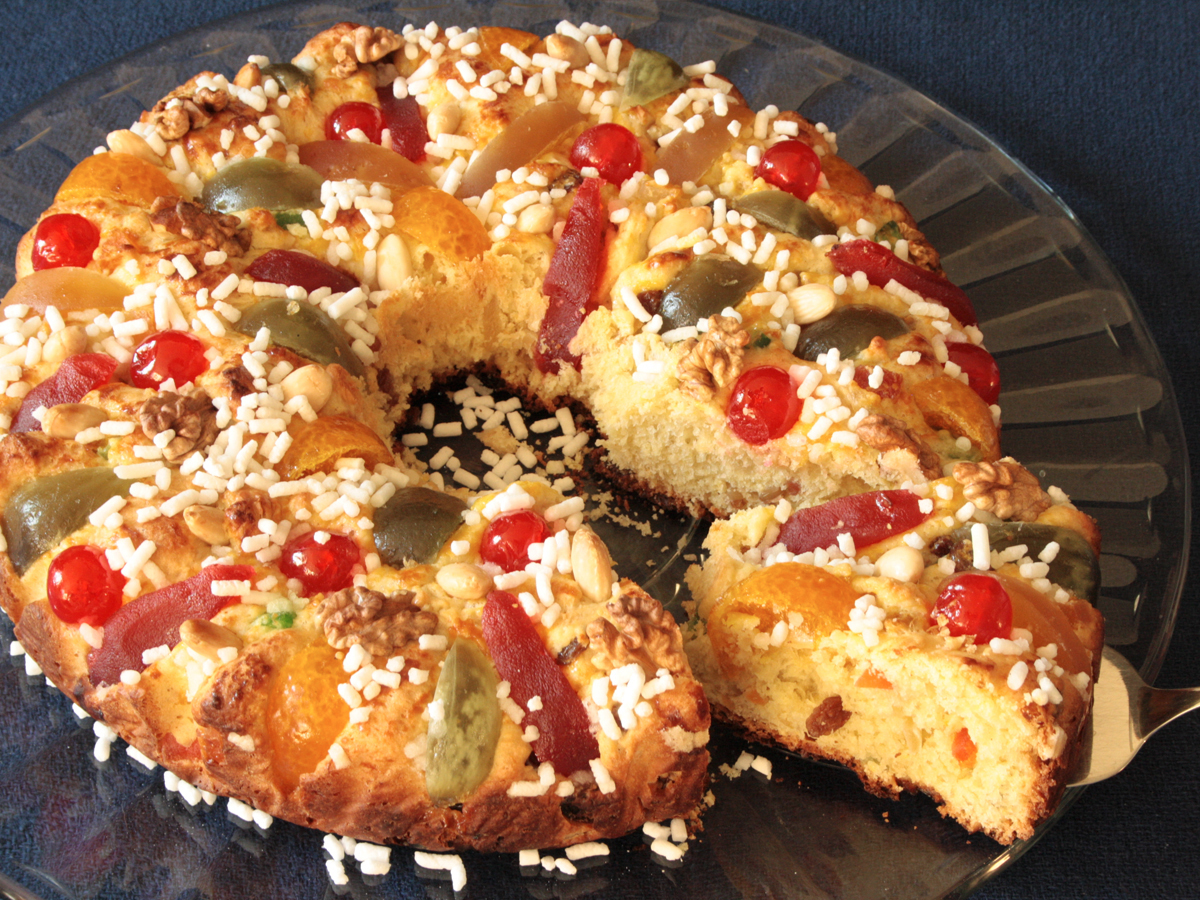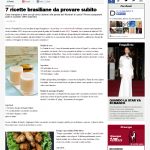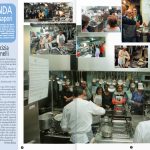The “King Cake” is a leavened cake shaped like a crown “inlaid” with candied fruit and nuts, that gives the familiar symbolism of the gifts of the Magi: gold (the crust of the cake), myrrh (the fruit) and frankincense (aroma). Traditionally, each cake has inside a dried broad bean (reminiscence of the Roman Saturnalia banquets) and/or a small gift (or money). Whoever finds the bean in his piece of cake has to bring next year’s “King Cake”, but at the same time this same person will get good luck in the new year.
The “Gâteau des Rois” made its first recorded appearance in France at the court of Louis XIV, during the New Year and Epiphany period. However, it is a inherited tradition from the Roman Empire period. This cake has spread quickly across France, giving place to many different versions of its original recipe. After the French Revolution period its name must be changed to “Gâteau des sans-culottes”. Around 1869 the typical original recipe from the south of the Loire River was introduced in Portugal, more precisely in the “Confeitaria Nacional de Lisboa”, becoming soon an important part of Christmas and Epiphany celebrations. (Information source: Cozinha Tradicional Portuguesa, Maria de Lourdes Modesto, Editorial Verbo,1986)
Ingredients
For the yeast mixture:
• 25 g fresh yeast
• 50 ml warm milk
• 1 tablespoon sugar
• 50 g all-purpose flour
For the dough:
• 350 g all-purpose flour, approximately
• 75 g butter
• 75 g sugar
• ½ teaspoon salt
• ½ teaspoon shredded lime zest
• 1 teaspoon shredded orange zest
• 3 small eggs (150 g)
• 50 ml Port wine
• 100 g chopped candied fruit
• 50 g raisins
• 50 g chopped mixed nuts
• 1 dried broad bean, optional
To finish:
• 1 egg yolk
• 1 tablespoon olive oil
• 50 g mixed nuts
• 250 g entire candied fruit
• pearl sugar
Preparation method
- Dissolve the yeast in warm milk, add sugar and all-purpose flour, mix well. Let it rise in a warm place.
- Soak the chopped candied fruit and the raisins in the Port wine.
- When “yeast mixture” has doubled in volume add the dough ingredients, except the fruits and the nuts. Knead the dough for a few minutes. Let it rise in a warm place.
- When the dough has doubled in volume add the fruit and the nuts. You don’t have to knead the dough again – it’s a “sticky” dough.
- Shape the dough into a “ring” onto a baking tray (24 cm in diameter) lined with grease-proof paper. Brush a mini cake mould with a little oil and lay it in the center of the “donut”. Let it rise again in a warm place until doubled in volume.
- Brush all over the the top with the egg yolk beaten with the olive oil.
- Cut the entire candied fruit into slices.
- Using a sharp knife or scissors make small cuts in the top of the “ring” and insert in each one slices of candied fruit or nuts. Sprinkle the pearl sugar over the top. Let it rise for 30 minutes.
- Bake in preheated oven at 200°C for about 30 minutes, until golden brown.
Note: the natural yeast (sourdough starter) makes this recipe even better.
Posted on: 18 December 2013













 I’m an architect. I was born in Brazil and my father was Italian.
I’m an architect. I was born in Brazil and my father was Italian.